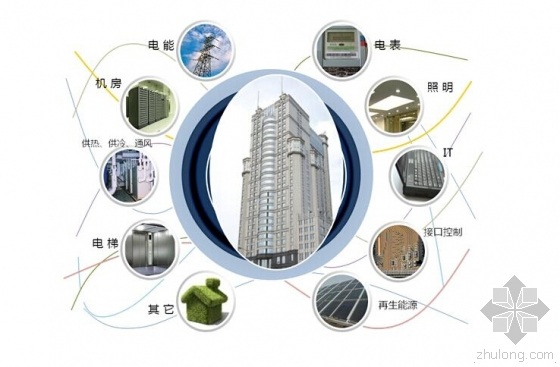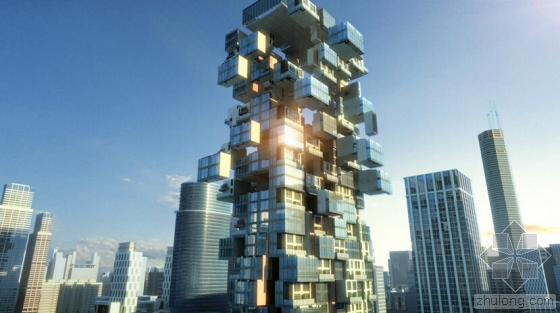
"Internet +" spawned intelligent buildings
Under the tide of "Internet +", a new word "intelligent building" has emerged in the construction industry. Only two bed-sized mini-bedrooms, buttons automatically converted into a smart office; the walls of the house cracked, coated with nano "Band-Aid", cracks that are strong closure... Embrace the Internet architecture, is such a "tide"!
With the improvement of information technology and level, BIM (Building Information Model), big data, Internet of Things, mobile technology, cloud computing, etc., can break the traditional development model. These technical means are realized through the "Internet", and then affect the construction industry, improve the level of industry informatization, reduce costs and improve efficiency.
Grafting "Internet +" is a popular trend in the development of intelligent buildings. Intelligent building is the product of modern science and technology, and the implantation of the idea of "Internet +" provides unlimited possibilities for the building of "intelligent building". Therefore, intelligent building is the inevitable trend of the construction industry in the future. From the national level to all parts of the country, intelligent building has been put into the height of intelligent city construction to focus on promotion. At present, China's smart building market output value has exceeded 100 billion yuan, and is growing at the rate of 20% - 30% per year, the future market can reach several trillion yuan.
Although the development of intelligent buildings in China is hot, the intelligent building industry is still in a mess. This is mainly reflected in the following aspects:
1, the building parties do not agree with each other. Different types of construction projects have different intelligent requirements.
2, the level of system integrator is not high. The intelligent building market is mainly developed in the field of construction to meet various engineering requirements. How to make good use of things requires a complete set of processes of design, planning, construction, supervision and acceptance. Among them, it is related to the level of system integrators, and the system integrators should be well integrated with the relevant departments in the construction field.
3, the lack of original products. China's building intelligent market is in the growth stage, and the industry concentration will gradually increase in the future. Competition in the low-end market will become increasingly fierce, smaller firms without core competence will be eliminated; the growth of the high-end market will exceed the industry average level, but the financial strength and technical ability of entrants will be put forward high requirements. In the future, some local enterprises with strong capital strength and technological capabilities will be able to fully share the growth of the industry and achieve rapid development.
The author concludes that although the current situation of intelligent building development is chaotic, energy-saving buildings and green buildings advocated by the state are closely related to intelligent buildings. Promoted by the spontaneous market demand and policy encouragement, the prospect of intelligent building market in China is still very optimistic.

Transformation of modern construction industry 3D printing is definitely a "hard" role that can not be absent.
In addition to automation equipment and the new generation of information technology, the transformation of the construction industry, there is a "ruthless" role that can not be ignored, it is 3D printing.
The original form of 3D printing entering the construction industry is the architectural model, which is used to show the style of the house for customers, or to be placed at home as a work of art to appreciate. Although creative, it is the lowest application of 3D printing in the industry. With the development of technology, 3D printing houses have been proved to be feasible, and some 3D printing houses have appeared all over the world.
From a technical point of view, there are two ways to make a solid house by using 3D printing technology: one is to print out the components of the house and then assemble them later; the other is to print out the shaped house directly and install doors and windows as required later.
Generally speaking, because 3D printing structure is built layer by layer, no matter which way, engineers are allowed to play more roles in building materials and structural renovation. If post-assembly is the current feasible mode of 3D printing building, then disposable printing of physical housing will be the mainstream development trend in the future.
First, traditional house products are manufactured by manual construction and mechanical cutting. From the perspective of the house designer, there may be some deviation in accuracy and aesthetics. The 3D printer is controlled by computer, so long as it has data support, any complex design model can be manufactured quickly and accurately.
Secondly, 3D printing can meet the needs of customers'individualization and customization, while greatly reducing the manufacturing threshold and time cycle.
Third, 3D printing can save manpower and material costs. Because of the abandonment of steel structure, the main materials of 3D printing houses are concrete, plastics and so on. Some materials can even be replaced by recycled waste. In addition, the high feasibility of 3D printing architecture provides a good basis for scientists'conception of "building intellectualization".
Therefore, we can foresee that under the guidance of 3D printing technology, the construction industry has changed from "building houses" to "building houses" mode. But I need to point out that 3D printing building is just born, and it lacks the necessary safety and quality standards. Whether it can replace the traditional way of housing construction remains to be tested by time.


